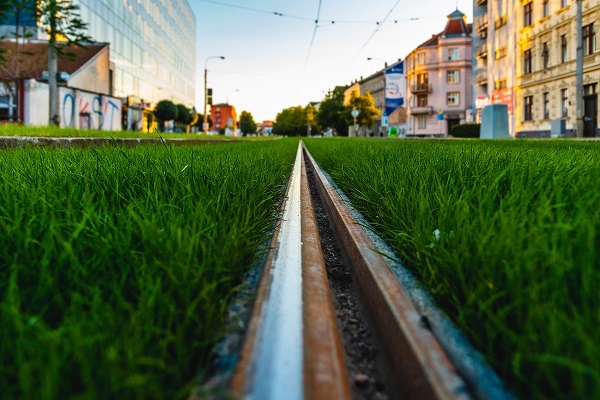
What’s this?
Ever heard of an urban heat island? this term, coined by climate experts, allows us to define a recent phenomenon, mostly caused by anthropogenic activity, that is an unsustainable urban planning, in which the excessive overbuilding and the mineral nature of the coatings of roads and buildings, combined with known heat emissions related to human activities themselves (air conditioning, endothermic engines of vehicles and industries), produce heat that leads to a temperature rise of up to 5 ° C in the exposed areas, an artificial microclimate significantly warmer than in rural areas, which leads to to the drastic reduction of human well-being, as well as favoring the climatic increase of the planet.
How is it contrasted?
Why are the less populated areas not affected by this phenomenon? Simple, in these environments it is possible to find one of the most effective solutions to this climate crisis, green. The vegetation, in fact, thanks to its enormous functionality, is able to mitigate the phenomenon described, through various physical and physiological aspects:
– Dissipation of heat through photosynthetic processes, the creation of photosynthesis, in fact, is allowed through gaseous exchanges between plants and the atmosphere, through which the same receives solar radiation and releases water to the environment. The water which, released into the surrounding environment by the photosynthetic process, evaporates on contact with hot surfaces and then, using the heat present to effect its change of state from liquid to gaseous, sequestrates it, reducing the perception of heat in neighboring areas.
– Creation of air channels and breezes, the presence of plant volumes involves the development of air motions which by convection transports the heat from a warmer environment to a cooler one.
– Shading that physically prevents solar and thermal radiation from neighboring areas. To conclude, the inclusion of greenery, consisting of tree, shrub and herbaceous components, both in the public and private sectors, leads to the improvement of climatic comfort and makes the city more liveable.
The role of the turf
The turf fits perfectly into this new current of thought, since first of all it reduces the amount of cemented areas that can reflect and increase the heat of the application area; Furthermore, the lawn, by absorbing solar radiation, uses it for photosynthesis, thanks to which it releases moisture which reduces the heat on the surface of the vegetation and in turn prevents the reflection of solar radiation towards the atmosphere. The aesthetic / functional use of the green cover goes beyond the traditional concept of an English lawn to which we are used to imagining, since in order to meet certain sustainability standards, it will be necessary to limit the water-nutritional and management requirements of the species used. The sustainable carpet will have to be made up of increasingly ecological varieties resistant to abiotic (water-nutritional) and biotic stresses (diseases caused by fungal pathogens), intended as an extensive lawn with reduced management demand (reduced number of mowings, reduced use of fertilizers) and that can be managed without the aid of plant protection products.
Our thinking
At Seminart, in order to eliminate the ICU problem and promote the sustainability of the carpet, we support the use of our macro-term varieties, rustic essences, resistant to low cut, capable of generating a dense and vigorous carpet. Their deep root system and the intrinsic physiological capabilities of these species are the basis of their adaptability to the summer climate, allowing them to be used in sunny exposures and hot climates with low water requirements. Their physiology, in fact, unlike microtherms, allows them to maintain active photosynthetic activity even at temperatures that are prohibitive for other varieties, favoring the aforementioned processes especially during the hottest moments of the season!


